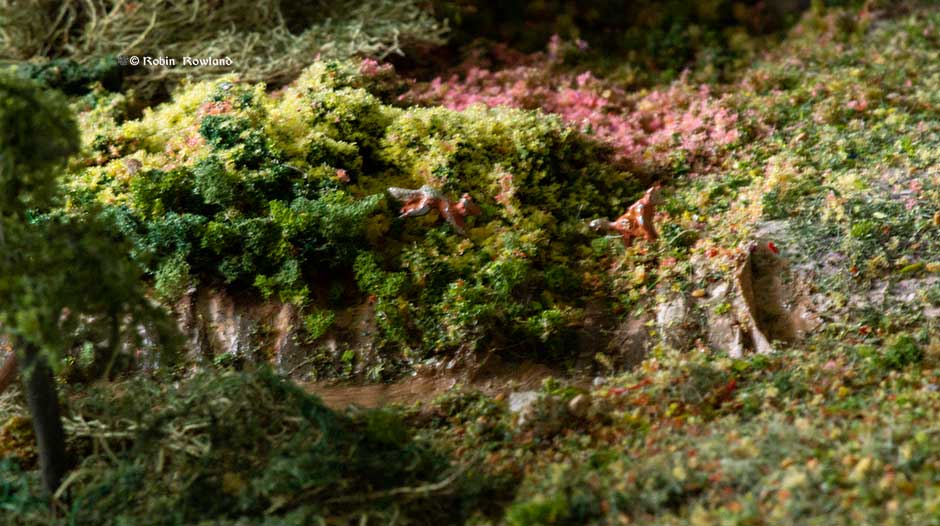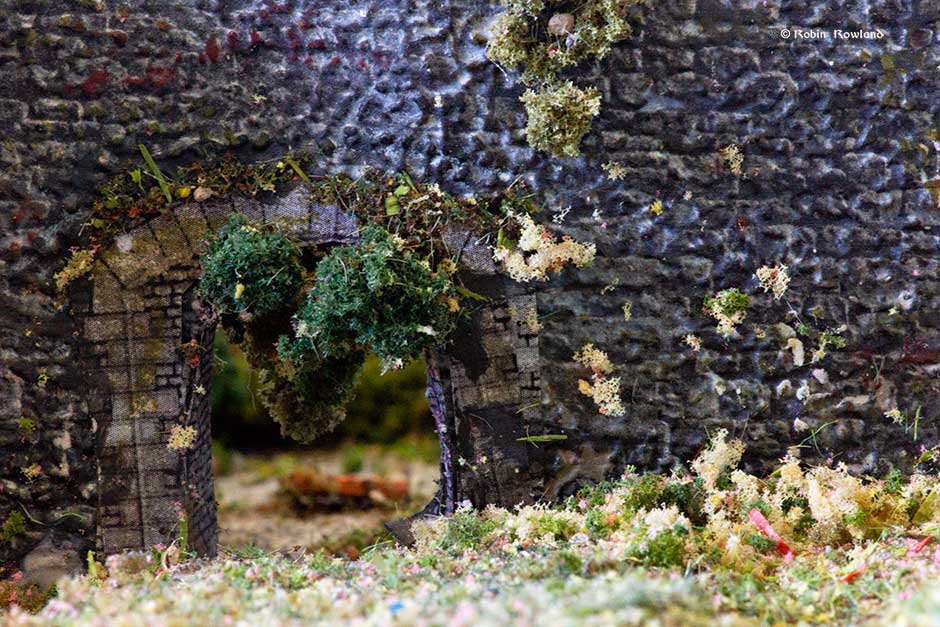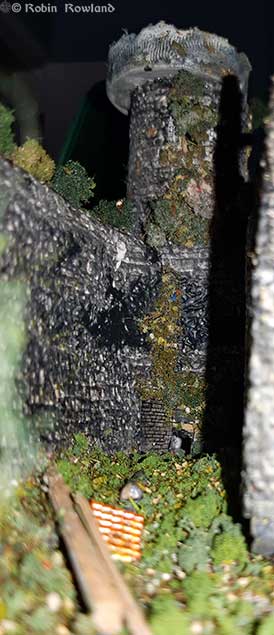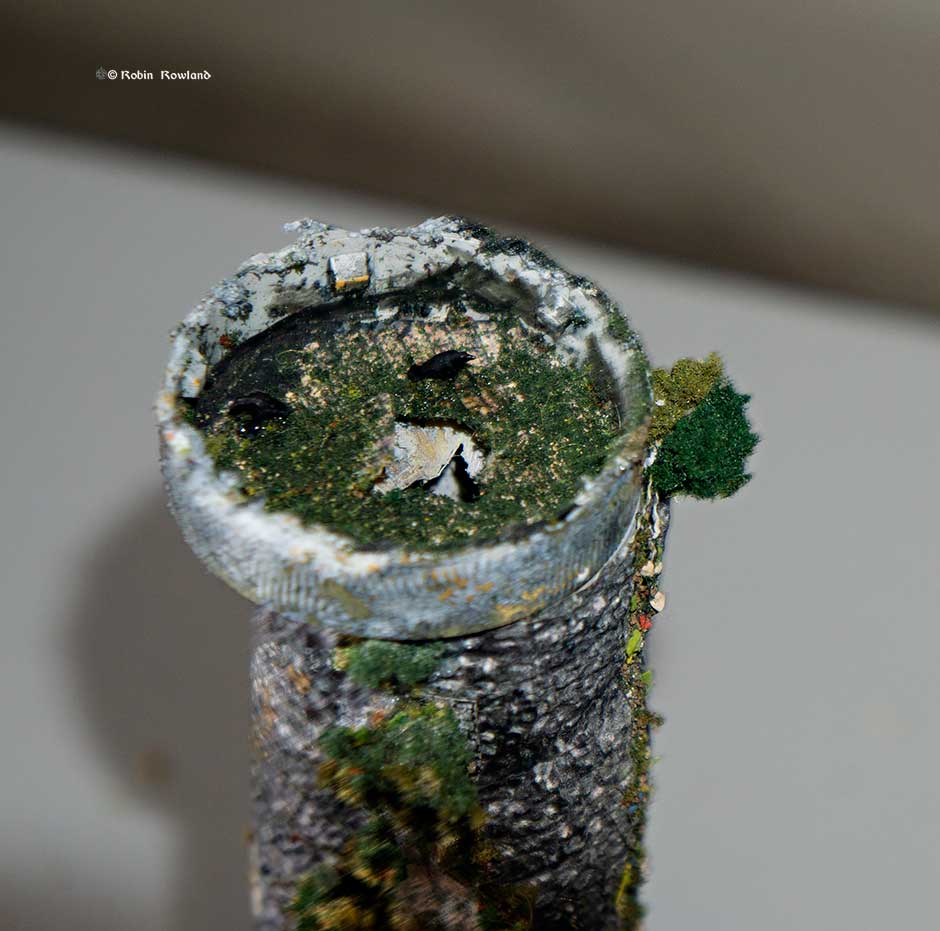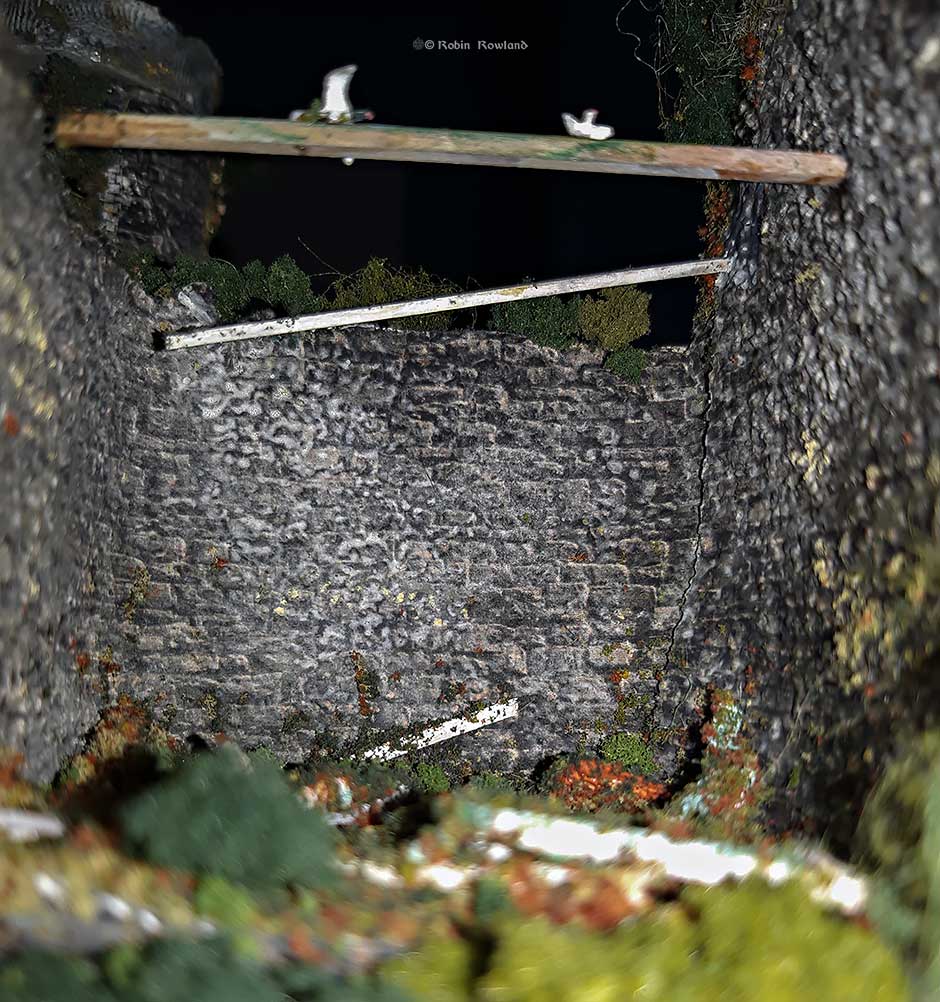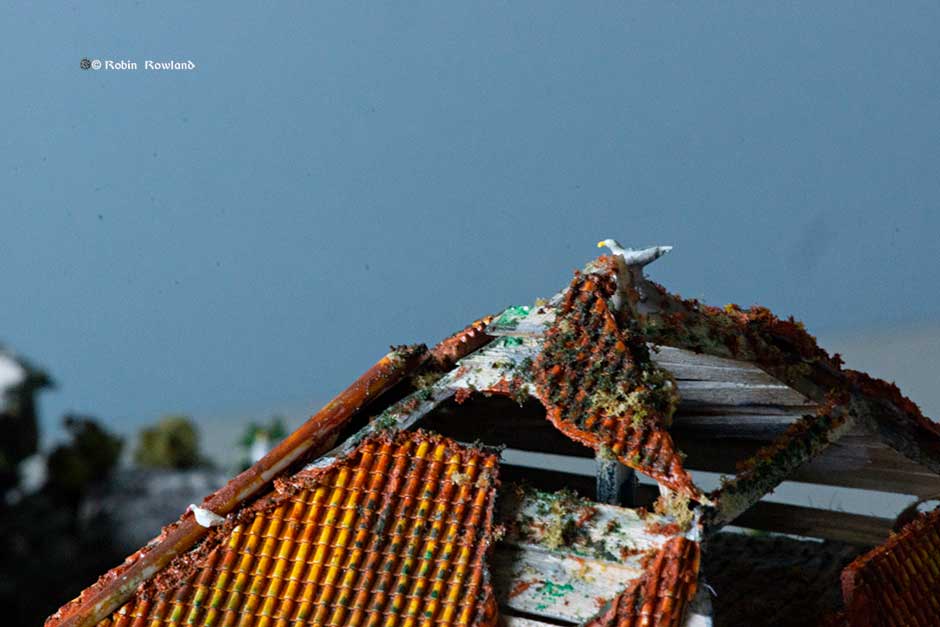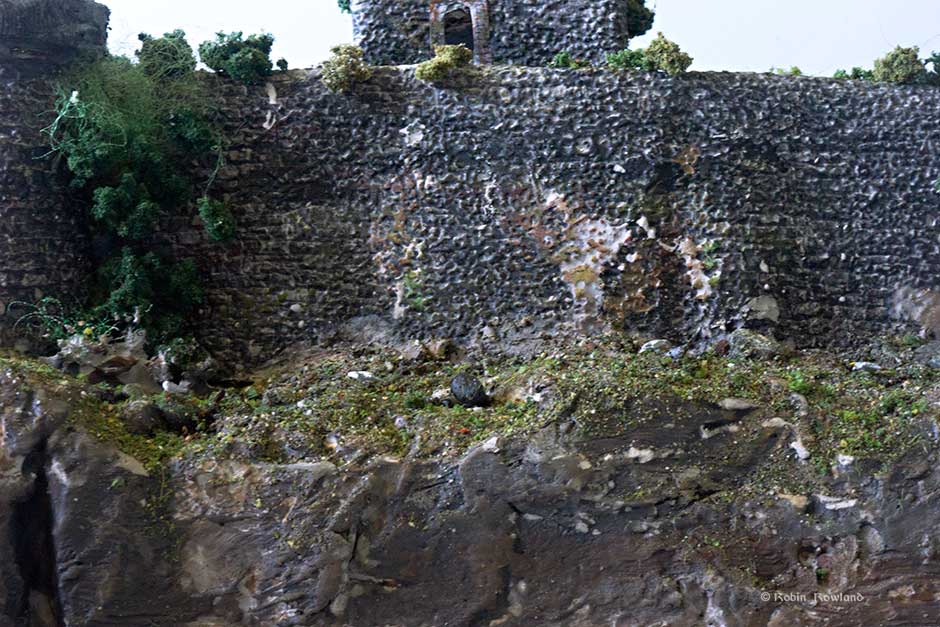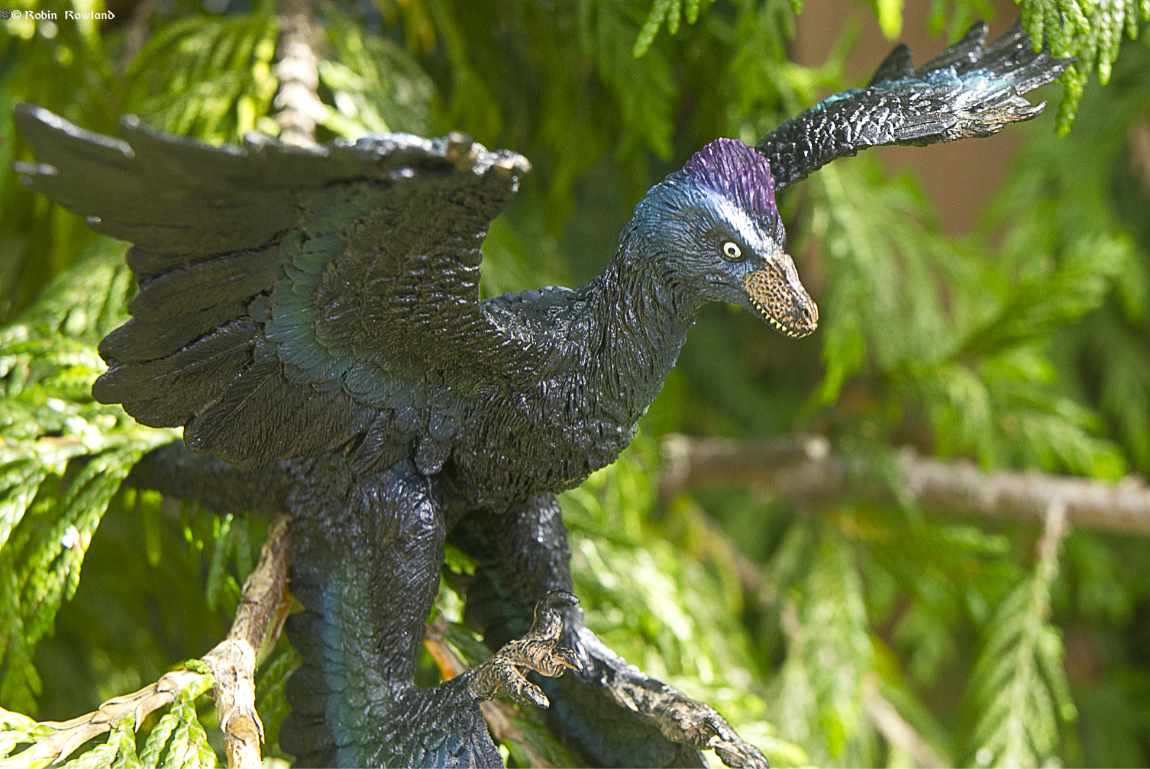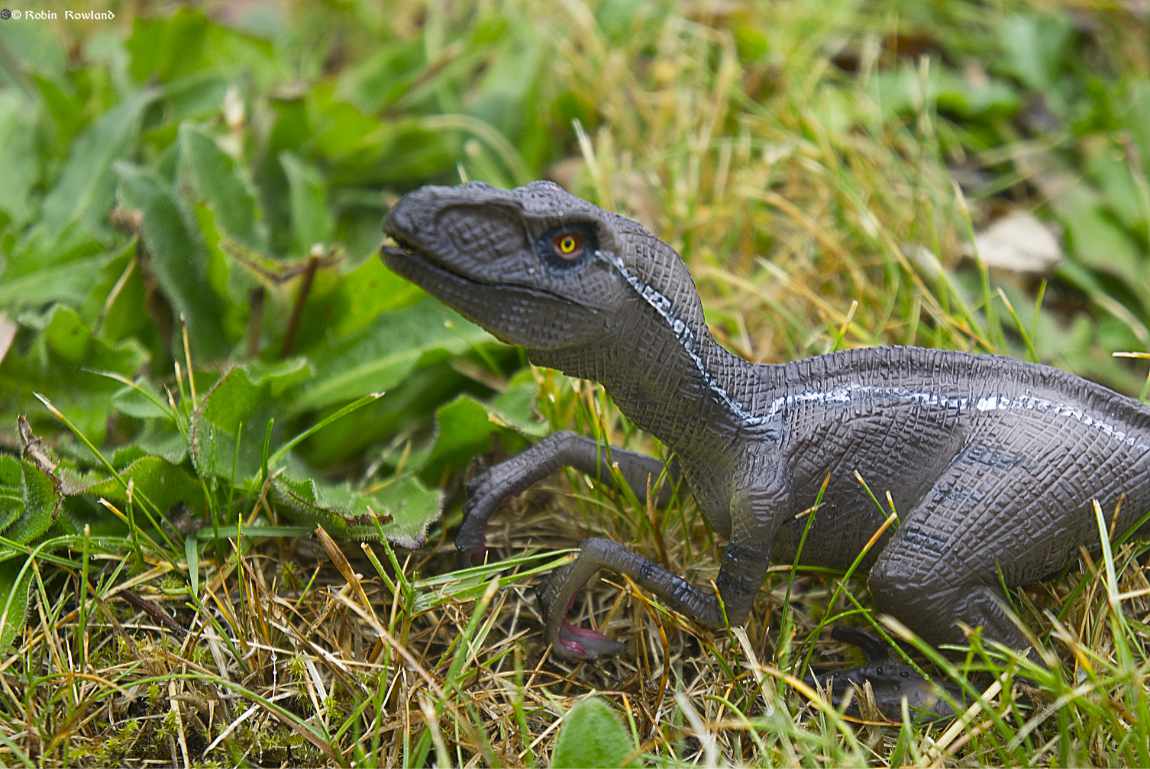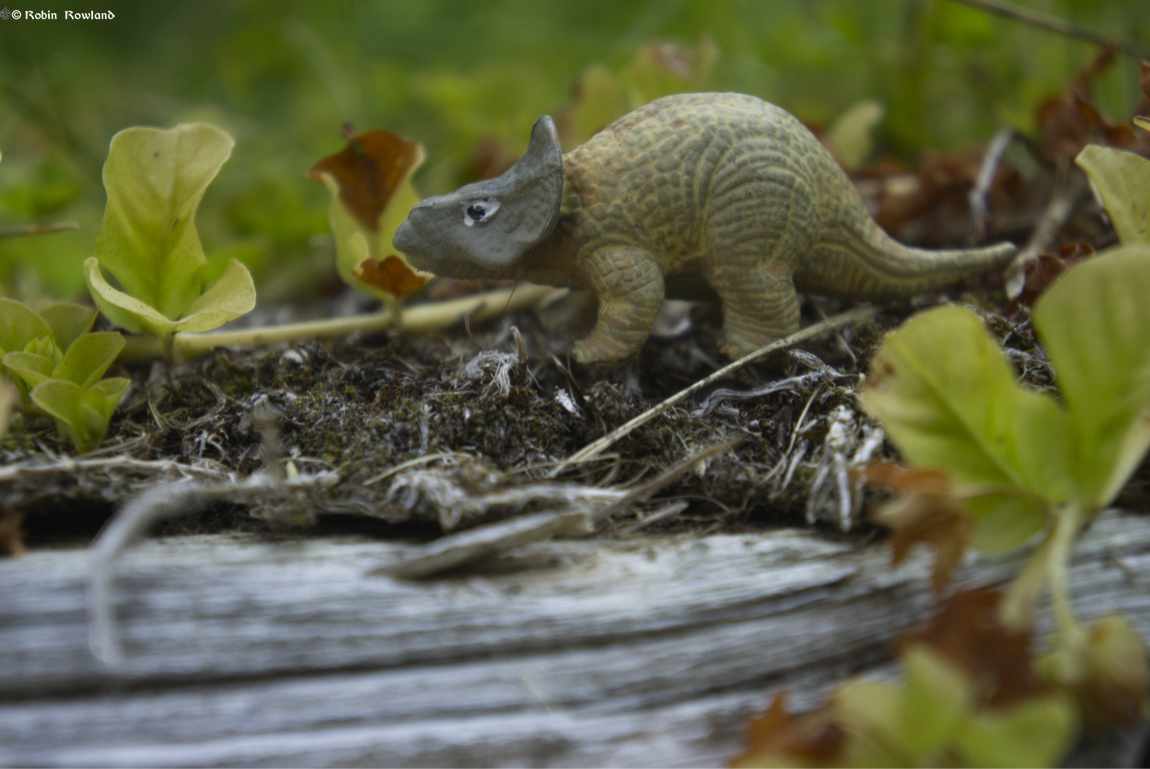
The Eagle of the Ninth (updated) Roman Signal Station diorama
(This is the second of my scratch building and modelling projects based on the books I loved as a kid)

Rosemary Sutcliff was my premier favourite author as a kid–and I still reread her novels from time to time more than 40 years later.
Her first, and by far her most famous novel was The Eagle of the Ninth, first published in 1954. I must have first read it when I took out of the library six years later, when I was ten,around 1960. The Eagle of the Ninth is still one of my favourite novels, the story of the young Marcus Flavius Aquila and his freedman Esca searching the wilds of Caledonia (now Scotland) for the eagle of the lost Ninth Legion. It’s also still a favourite for fans around the world to this day (including those who had to take in school in Grade 9 in the 60s and 70s in both British Columbia and Ontario and probably elsewhere).
The Eagle of the Ninth also finally became a Hollywood movie, The Eagle, in 2011, decades after publication.
Back when I was ten or eleven (and also interested in model railroading) I attempted to build the abandoned Roman signal tower takes place, based on the C. Walter Hodges drawing in the original novel.
As you can see from other entries on this site, for the past year or so, in semi-retirement, I have been scratch building various models, mostly from science fiction. So a few months ago, I decided that while I might continue to model Star Wars and Star Trek, those wealthy franchises are getting somewhat stale. Almost everyone else is modelling Star Wars and Star Trek.
S0 it was time to branch out to more interesting work, involving novels I loved when I was growing up, most of which did not make it the big screen. In The Eagle movie, the chase through the moors and the confrontation at the signal tower was dropped for a more “Hollywood” style battle over the eagle of the Ninth Legion (not a satisfying substitution at all in my view). The 1977 BBC television series did use a “tower” set based on the C. Walter Hodges drawing.
Since I had already tried to make the signal tower decades ago as a kid, the obvious choice for an Eagle of the Ninth project was the signal tower.
So why did I update?
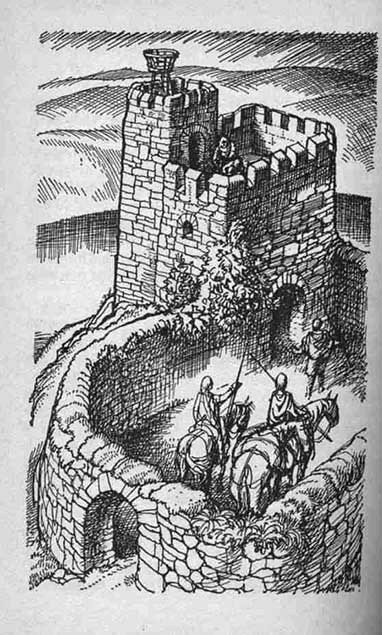
My plan at first was a model based on the original drawing from the 1954 novel and used in many of the updates and republished versions.
It would have been a fairly simple project, a small courtyard, what Rosemary Sutcliff called a “guardroom” and the signal tower itself.
(The one perspective problem with the tower drawing is that the entrance gate is too small for people on horseback)
Before starting I did some basic research, checking Roman “signal tower” both in my personal library of Roman military history (which started when I began reading Rosemary Sutcliff) and online. It was soon quite clear that Roman signal tower in Hodge’s drawing bore no resemblance to the vast majority of Roman signal towers through the history of the empire.

The one thing that stood out from the current archaeological evidence is that what are still called “signal towers” were not just signal towers or watch towers–which is why the archaeologists prefer the term “signal stations.” Aerial surveillance and on the ground research has shown that in Scotland, northern England and later along the coast known as the Saxon Shore (which Sutcliff describes in The Silver Branch and The Lantern Bearers) the stations were relatively close together, some as close to one to two kilometres apart. So while the stations did have signalling capability, it was unlikely they were the hilltop beacon relays used in later centuries such as the Elizabethan and Napoleonic eras.
The stations followed the same basic concept design across the Roman Empire, but the installations varied in size depending on location and the military requirements ranging from a tower in a walled courtyard to mid-sized stations and what archaeologists today are calling a “fortlet” that is a small fort. (Fortlets could apparently be either large signal stations or smaller versions of the standard legionary or auxiliary fortress with just a couple of barracks blocks as well as other buildings). Fortlet signal stations were built along the Saxon Shore when the Roman Empire and Britain was threatened by sea-roving Saxon invaders. Those fortlets were a vital link joining the much larger Saxon Shore fortresses (which are described in The Silver Branch and The Lantern Bearers)
That means the towers themselves were not, as the reader might assume from Eagle of the Ninth, the base for a small lonely team of perhaps four legionaries responsible for the signal system. They varied in size. The stations were likely a base for what today we would call a platoon of perhaps fifteen to fifty men, again depending on the location and military requirements. The basic Roman squad was eight men, in the infantry commanded by decanus or in the case of cavalry troop of decurion. Some archaeological evidence shows that the towers had stables. Riders could have relayed messages if the weather prevented standard signalling. Stations with perhaps with fifty men could have been commanded by a junior centurion, likely under the eye of an experienced optio or just commanded by an optio, the equivalent of a staff sergeant or senior warrant officer. (Just as today second lieutenants command platoons and are watched by experienced senior non-commissioned officers.) Larger stations including those that could be called fortlets probably could have been the base for one or two centuries of about eighty to one hundred men each.
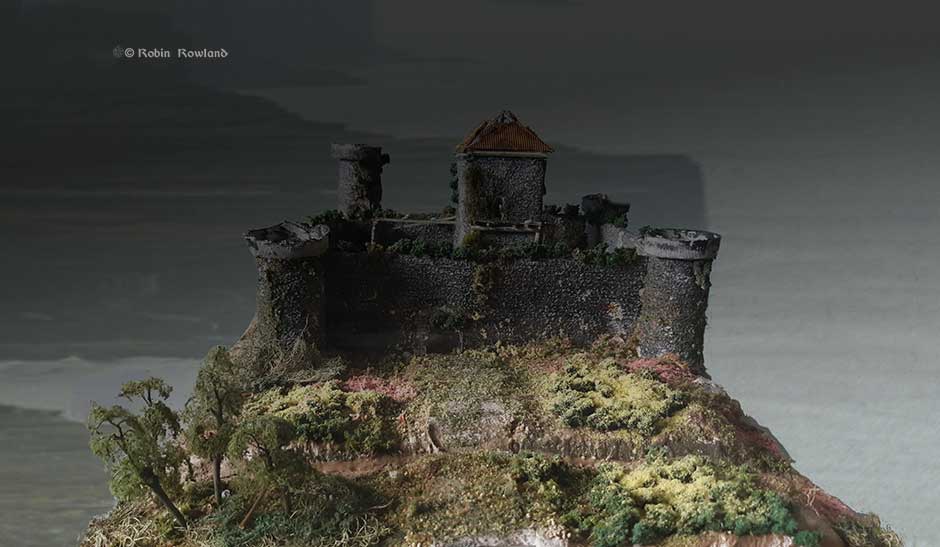
Hostile territory
As I was reading the admittedly limited online academic literature, (there is more but the public has to pay extortionate prices to read it online from commercial scholarly publishers) the suggestions by the archaeologists on the role of the signal stations somehow began to sound familiar — and not just because I’ve been reading Rosemary Sutcliff and both fiction and nonfiction about the Roman army in the decades since.
I quickly realized that there was similar situation in the wilds of Caledonia as well as Roman garrisoned and for a period Roman occupied province of Valentia and that was what was happening two thousand years later in Afghanistan mainly in Kandahar, Helmand, Urozgan and other provinces from late 2001 until the staggered coalition withdrawal in the early 2010s.
Most of the archaeological papers were written prior to the 21st century war in Afghanistan, some as long ago as a century ago. Academics also usually don’t speculate without corroborating written or other evidence.
What prompted me to build the model in this way was that in my view the Afghanistan model is the best analogy for the Roman signal stations in ancient Britain.
I “covered” the war in Afghanistan from a desk in Toronto as photo editor for CBC News. That meant I was in almost daily contact with our staff and freelance journalists mainly at “Kaf” (Kandahar Air Field) or in Kabul. I knew when our crews were going “outside the wire”as embeds to the forward operating bases (FOB) and forward observations post (FOP or OP depending on which military was on that post). Some independent freelancers I worked with spent most of their time embedded “outside the wire.” Once, by coincidence, one day at a surplus store, looking to buy some outdoor clothes for a nature photography trip to New Mexico I ran into a freelancer colleague I knew who, on a limited budget, was gearing up for an embed in Afghanistan.
My conclusion is that Afghanistan is the best analogy for what Roman soldiers faced in Valentia and Caledonia. The nineteenth century colonial period and the American “old West” are not a good analogy due the EuroAmericans’ overwhelming superiority in the technology of the time. In Afghanistan, the coalition did have a superior military and a technological advantage but, like the Romans facing the northern tribes of ancient Britain, as we have learned over the past decade and more, it wasn’t enough. One archaeologist has suggested the analogy of the United Nations observation posts along the Green Line in Cyprus, but there the role is just observation and with one notable exception–the Turkish invasion–those observation posts were not in hostile territory.
So to continue with the analogy and compare ancient Britain with Afghanistan, the great legionary fortresses at Eburacum (York) and Deva (Chester) could be the equivalent of Kandahar Air Field or Bagram Air Field.
The midsized signal stations were probably the equivalent of the company sized forward operating bases (with the company and supporting troops the equivalent of a Roman century). The legionary and auxiliary forts and fortlets or large signal stations were likely the equivalent of what were called “camps” and “patrol bases” in Afghanistan. You can compare this Wikipedia list of ISAF bases with this list of Roman forts and fortlets in Scotland as well as the extensive list of temporary marching camps again just in Scotland.
One of the best know is FOB Martello operated by the Canadian Forces in El Bak, 200 kilometres north of Kandahar. Company sized units and support troops from Canada and the Netherlands were based at Martello. Martello was named for the early nineteenth century defense and observation towers built by the British in England, Canada and elsewhere as a defence during the Napoleonic Wars. Another well known FOB was Ripley built the US Marines in Tarinkot, Urozgan Province and later called FOB Davis by the Australians.
The smaller signal stations the equivalent of observation posts that were the base for one or two platoons of infantry and supporting troops.
 One of those US Marine Corps OPs at Kunjack in Helmand Province is described in the book Shooting Ghosts A US Marine, a combat photographer and their journey back from war by Thomas J. Brennan and Finbarr O’Reilly. Brennan says OP Kujack looked large from the bottom of a hill but was actually the size of a high school gym for himself and fifteen Marines. That could also describe one of the smaller Roman signal stations, while larger than a high school gym would have been the base for 15 to 2o men. A study of one site in Scotland speculates there would have been twelve infantry, four officers and eight cavalry or mounted infantry at the station.
One of those US Marine Corps OPs at Kunjack in Helmand Province is described in the book Shooting Ghosts A US Marine, a combat photographer and their journey back from war by Thomas J. Brennan and Finbarr O’Reilly. Brennan says OP Kujack looked large from the bottom of a hill but was actually the size of a high school gym for himself and fifteen Marines. That could also describe one of the smaller Roman signal stations, while larger than a high school gym would have been the base for 15 to 2o men. A study of one site in Scotland speculates there would have been twelve infantry, four officers and eight cavalry or mounted infantry at the station.
A 2007 article in the Canadian Legion Magazine, Ghosts in the Hills, author Adam Day opens with these lines “In the mountains around Forward Operating Base Martello, the enemy are like ghosts; they hide among the villagers and emerge for battle only when and where they choose. Mostly they stay out of sight, firing their mortars and rockets from a distance. Sometimes though, they attack in force.” That could just as easily describe the tribes of Valentia and Caledonia coming out of the mist to attack one of the signal stations.
In both cases, there were smaller observation posts associated with the forward operating bases. At forward operating bases in Afghanistan, there were often observation posts “a couple of hundred metres” outside the main base. Archaeologists have found signal stations just 350 metres from a Roman fortlet.

Artistic licence and planning the model
In planning the model, I wanted to stay as true as possible to the descriptions by Rosemary Sutcliff while working from a base of what we know today from archaeology and history about the signal stations.
So
- the “tower” had to be a long abandoned ruin
- the model should reflect how Marcus and Esca hid from the wild hunt and took refuge in the “tower.”
- there had to be a high “tower” where Marcus threatened to throw the eagle into the waters below
- given those considerations, that signal station should reflect, as much as possible, current historic and archaeological knowledge.
So what did the signal station tower actually look like? What we know comes from Trajan’s column which depict signal towers along the Danube River during the Emperor Trajan’s campaign against the Dacians.

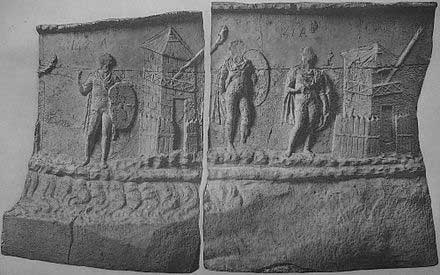

So the basic tower as depicted is a stone building with a peaked roof and a balcony where some sort of fire/smoke signal system is used. That’s very different from the scene that C. Walter Hodges imagined in his drawing.

The archaeological evidence indicates that the towers were first made of wood and thatch. If they became a permanent base, the tower would be made of stone with a tiled roof. Eventually the wooden palisade would be replaced by a stone wall with a bastion or tower at each corner and surrounded by a defensive ditch.
One example is Castle Hill in Scarborough, England, as described by the archaeologist R.G. Collingwood in 1930. (The signal station at Scarborough is from the fourth century CE Saxon Shore era).
You can see some aerial photographs from Scotland’s Gask Ridge Project which shows various Roman forts, fortlets, towers and posts at this link.
So with the research in mind, I created the signal station following those plans. However, I made two additions based on my reading. A stable for the horses and a well (at some sites archeologists have found indications of a well).
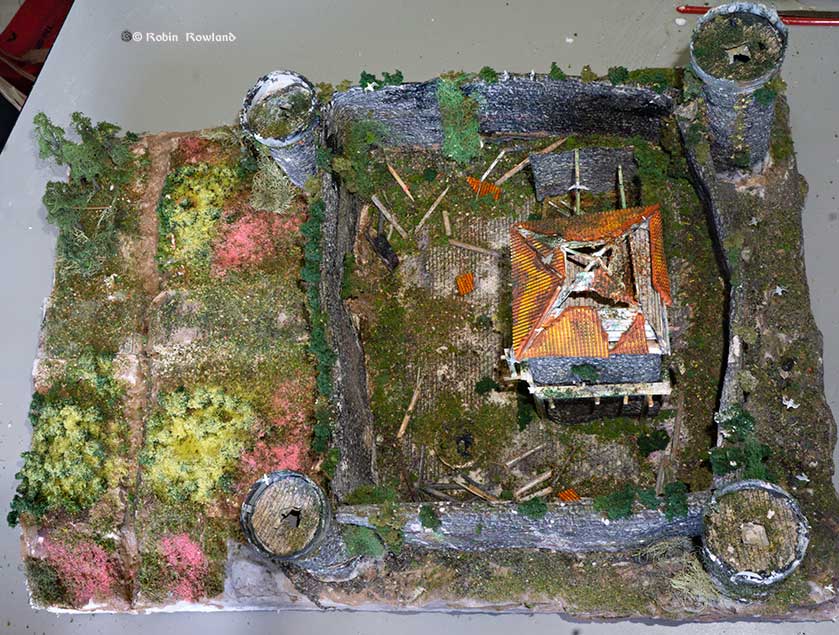




I made two decisions that depart from Sutcliff’s text. Marcus and Esca’s return journey is generally in a southeasterly direction from the territory of the Dumnonii toward Borcovicus on Hadrian’s Wall (modern Pevensey) in the centre of the island. In the novel the tower is described as on a scarp overlooking a tarn. A tarn is a lake in a hollow that was carved out by the glaciers during the last ice age. The signal tower in David Smee’s cover for the 1977 Puffin edition depicts a much larger body of water, probably the North Sea. So I decided somewhat arbitrarily to place my model on a cliffside overlooking the ocean similar to the signal tower at Scarborough because it offered more interesting modelling opportunities. I also had a photograph that resembled the background of the Smee painting (as you can see from the images above) that I could Photoshop in as a background.
The second decision was that the wild hunt for the two happens in the autumn, with the furze, bracken and heather are brown and colourless. A summer scene would work better for the diorama.

The other artistic change is that the tower on the right of this image is taller than the other three–just so Marcus and Esca can get up there, pursued by Liathan and his two young friends.
Time and place
The Romans under Governor Julius Agricola invaded Scotland in 80 CE and conquered much of the lowlands, ending with the Battle of Mons Graupius in the Highlands in 84. Agricola left the following year and the Romans tried to consolidate their conquest by building a series of forts, fortlets and signal stations across the occupied territory. Just as the war in Iraq diverted American and coalition attention from Afghanistan, the Emperor Domitian withdrew troops from Caledonian territory for his war in Dacia. It was during this period that a series of close signal stations were built, many along the Gask Ridge, and called by some archaeologists “glen blockers.”
Over the next decades the Romans were bogged down in Caledonia, withdrawing from the more hostile areas. The Emperor Trajan also withdrew more troops for his campaigns elsewhere, leaving the same kind of military vacuum seen today in Afghanistan. The Caledonian revolt where the Ninth Legion may have disappeared occurred in 117 CE just as Hadrian was coming to the throne and there was unrest across the Empire. (What actually happened to the Ninth Legion is still disputed by scholars, the Wikipedia link summarizes that debate). Construction of Hadrian’s Wall began in 122 and was completed six years later. So while the date isn’t exactly clear, it appears that Marcus arrived in Britannia as a junior auxiliary cohort centurion around 130 CE.
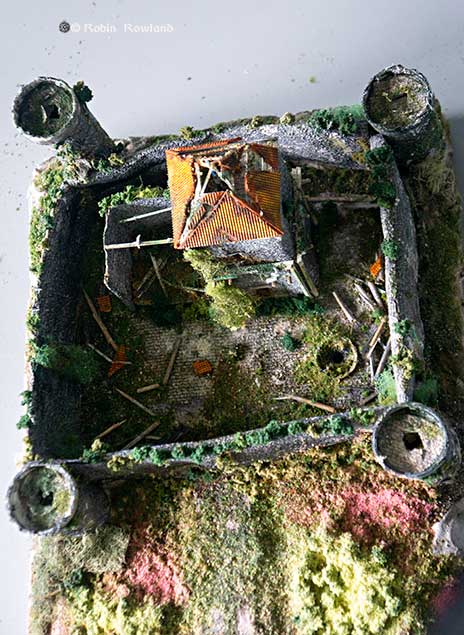
On their adventure beyond the wall Marcus and Esca reach the fortress of Trimontium, (today Newstead, near Melrose, Scottish Borders) named for what today are known as the three Eildon Hills ( the name trium montium three hills or three mountains). Sutcliff says the double cohort fort had been abandoned for thirty years. That matches current knowledge and evidence. Trimontium first began as a signal station in the campaign in 80 BCE and was later expanded to a full fortress–built by the Ninth Legion. That plan then was a line of forts, fortlets and signal stations that would ensure Roman rule over the region and allow for quick reinforcement it any element in the chain was attacked. (Again the Afghanistan analogy is apt. ) Trimontiumn was abandoned about 20 years later between 100 and 105 BCE, which fits Sutcliff’s timeline.
So she wrote:
Now the wild had flowed in again, grass covered the cobbles of the streets, timber roofs had fallen in and the red sandstone walls stood gaunt and empty to the sky. The wells were choked with the debris of thirty autumns and an elder-tree had taken root in one corner of the roofless shrine where once had stood the cohort’s standard and the altars of its gods…..
If a signal station was abandoned at the same time, that description would be the basis for the model.
The Wild Hunt
“Swathes of mist, drawn up from the deep glen, were still drifting across it before the rising wind, but as a starting point, upward of a bowshot away, something that might be a broch loomed through the greyness.”
“They swung in their tracks toward the nearest tongue of birch woods…”
Model railway birch trees.
“a mass of furze seemed to offer a certain amount of cover and they dived into it liked hunted animals going to ground and began to work their way towards its heart.”
“A dark and evidently much-used tunnel in the furze opened up to them and they slid into it, Esca leading. The reek of fox grew stronger than ever.”
N scale foxes from Langley Models.
Here you see the station’s vallum ditch, the yellow furze and the purple heather (as well as the foxes). The long abandoned Roman road leading to the station is covered in grass and undergrowth and has collapsed where it has been undermined by the ditch which is now a dirty stream.
“The building they had glimpsed through the mist was quite clear now; not a broch at all but an old Roman signal tower.”
“”The narrow archway, doorless now, gaped blankly in the wall…they stumbled through into a small courtyard…”

” Another empty door faced them…”
“a small courtyard where grass had long since covered the cobbles”
The balcony on four sides of the signal station tower that would have been used for the smoke or fire signals, has mostly long since collapsed.
Here is where I changed the scenario….assuming that much of the signal station tower’s ceilings/floors have collapsed….and to let Marcus and Esca get up the bastion tower so the model does pay tribute to the novel.
which means they head through the undergrowth past what’s left of the stables to that tower.
“Marcus was almost blinded by the thrashing to great black wings past his face and a startled raven burst upward uttering its harsh, grating alarm cry, and flew off northward with slow, indignant wing beats, caaking as it went.”
The ravens are Preiser HO scale crows. (since ravens are larger than crows and so fit in N Scale 1/144 to 1/160.)
I decided not to have any human figures in the model, imagining what the signal station would be like on any day in 130 CE when humans weren’t present.
The “well choked with the debris of thirty autumns” in the courtyard of the signal station. The wood, logs and tiles are from the station building and the collapse of the wall platform.
What’s left of the stables.
Gulls (and other seabirds) on the old peaked roof. The gulls and seabirds are a mixture of N Scale gulls from Langley Models and Prieser HO gulls and other birds (when the tiny figures were put side by side there wasn’t much difference.)
A Preiser bird on one of the towers.
A Preiser bird on one of the towers.
A couple of Langley seagulls on the wall of the signal station.
Gulls and other seabirds on the ocean side. (In this photo, the supports for the birds have been removed in Photoshop to make them appear to be flying)
A closer view of the gulls and seabirds on the ocean side.
TECHNICAL NOTES
MODEL
N scale (1/148 to 1/160)
Station walls…..thick corrugated cardboard covered with printed stone sheets. Station cobbles, printed stone sheets
Bastions
Prescription bottles covered with printed stone sheets with bastion tower tops the reversed lid of the prescription bottle
Well
Top from a liquid egg container
Various brands of model railway ground coverage and foliage that I have picked up over the years
Roman Road
A printed stone sheet
CAMERAS and PHOTOS
Sony Alpha 6000 18 to 55 lens
Sony Alpha 77 with 100mm Macro lens
Android phone camera
The fog image
An old shot of the west coast of Ireland on a cloudy day taken back in 1978
First Photoshopped in the front of the signal station.
Second image I added a very low opacity light grey fill layer, followed by a darker grey fill gradient fill layer with the darker fill toward the top.
Third image I added a third mid-opacity light grey fill layer to make it look really foggy,


